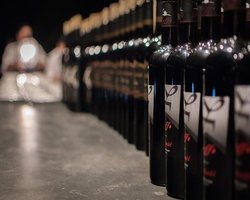August 30, 2018
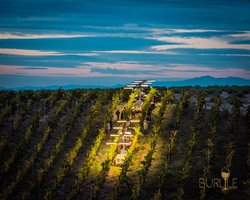 You sit down to dinner and uncork a beautiful bottle of 2014 Syrah. As you swirl and sip, you start to imagine life as a winemaker. The romance of waking up on a cool September morning, opening your blinds and looking out onto your perfectly manicured vineyards. The satisfaction of tending to your vines, watching them flourish, and ultimately fermenting and bottling the grapes for your family dinner table.
You sit down to dinner and uncork a beautiful bottle of 2014 Syrah. As you swirl and sip, you start to imagine life as a winemaker. The romance of waking up on a cool September morning, opening your blinds and looking out onto your perfectly manicured vineyards. The satisfaction of tending to your vines, watching them flourish, and ultimately fermenting and bottling the grapes for your family dinner table.
Think you’ve got what it takes?
We sat down with some of Temecula Valley Southern California Wine Country’s local rockstars – our winemakers – to ask them what really goes into producing the delicious wines that we simply get to open and enjoy. From grueling hours to the infamous “black hands” to strange harvest rituals, they gave us the good, the bad and the ugly on what it takes to be a winemaker during harvest.
Temecula Valley Winegrowers Association: What does a typical day during harvest look like?
Greg Pennyroyal, Vineyard Manager, Wilson Creek Winery: It is Monday at 11: 30 PM. My crew shows up in 30 minutes. We will harvest Viognier until dawn because that is what is best for wine quality. Quality of life can wait until next year when this wine will be on my dinner table and hopefully yours. Some may say this is exceptional effort but for those of us who are possessed by the muse of Vitis Vinifera, it is the best way – no, the only way – to bring in the fruit that I have nurtured since last fall. People ask, “Why are you here in the middle of the night?” To which I quote Thoreau, “Why are you not here?”
Dakota Denton, Winemaker, Gershon Bachus Vintners: I wake up, put my boots on, and walk the vineyards in the cool of the morning. Then, it’s off to the cellar or crush pad for pump-overs and to crush more grapes. By the time this is done it is time to pull samples for the lab, a second set of pump overs and a beer to end the day. Then repeat!
Olivia Bue, Winemaker, Robert Renzoni Vineyards: First and foremost, attire: Jeans (even if it’s 100° F out), old t-shirt (stained with the previous vintage’s wine), steel toe boots (always make sure to shake out dirt and grape skins), big harvest hat…Oh, and of course our purple cracked hands.
Then the day consists of early morning vineyard visits to collect grape samples for analysis; hydrometer and temperature readings on all fermenting wines; smelling the top of each fermenting tank to make sure there are no off odors or nutrient deficiencies (making sure to not get too close, lest we get hit with a CO2 bomb); and, most importantly, tasting each lot daily.
Once reds come in the real harvest bootcamp begins! This means pump-overs 3 times daily with at least 3 hours off in between. This involves sanitizing all hoses and pumps before and after each lot, making any necessary adjustments to the wine, and removing fallout seeds to minimize astringency. As the reds approach the end of alcoholic fermentation, it’s time to drain the tank of all its wine, leaving behind skins to get pressed out. To remove skins from the tank, we jump inside to shovel them out into the bins below the tank door. This is always a good workout!
TVWA: What is the hardest part of harvest?
DD: Waking up early.
OB: When my alarm goes off at 3 AM.
Gus Vizgirda, Winemaker, Wilson Creek Winery: The harvest has its many expected effects, such as exhaustion. But one that is seldom talked about is what I like to call the “Black Hand.” This happens when calloused hands come in contact with red grape juice. It is the natural condition of a winemaker during harvest. As much as “Black Hand“ is an honorable winemaking badge, it has disadvantages. My wife thinks it’s disgusting and makes me look dirty; and my grandchildren think that I have some sort of disease, avoiding my hugs. So, if you see me around during this time of the year with my hands in my pockets, understand this: I have “Black Hand.” I’m polite not to show it in public, but – believe me – in the privacy of my home late at night I look at my hands in wonderment and passionate pride, remembering the good times I had this Harvest… and longing for grandchildren’s hugs.
TVWA: What is your favorite part of harvest?
GV: Getting to the winery at 3 AM. I love to work in the morning and see the sunrise as we are pressing the grapes. I enjoy completing most of the work before the heat of the day.
OB: Processing grapes as the sun rises. And, when the last lot is pressed out; not because harvest is over but because I can finally look back and feel proud of all the blood, sweat and tears put into the vintage.
DD: The nonstop craziness from start to finish.
Joseph Wiens, Winemaker, Wiens Family Cellars: The change of pace is welcoming. We are busy bottling non-stop before crush to free up our tank space, so we look forward to getting back into the harvest season. This is also our first look at the new vintage. We’re excited to see the fruit that we’ve been watching mature on the vines finally come in for processing into wine.
TVWA: Do you have any harvest rituals – before, during or after?
DD: Every harvest I stop shaving (not saying I ever started).
OB: Happy hour at 9am.
JW: We have a rule that after our first 8 hours of work for the day, we can start cracking brews to get us through the remainder of the day.
Javier Flores, Winemaker, South Coast Winery & Carter Estate Winery: The Sunday before Harvest, I pray for a good crop and that no one gets hurt. A safe harvest is a good harvest. Then the very first day of Harvest we buy breakfast burritos for all the winemaking team members to celebrate the beginning. The very last day of Harvest we hang a plastic Skeleton with dates marking the start and finish of the harvest. Then the following Friday we have a super lunch at our winery, prepared by winemakers.
GV: I play my bugle at passing hot air balloons and play “Reveille” at sunrise for [Wilson Creek owners] Rosie and Gerry. The balloon passengers are always surprised.
TVWA: What is the craziest/scariest/funniest thing that has happened to you during harvest?
DD: Not knowing that a keg that it was still fermenting, I started to open it. After the second turn of the clamp, there was a loud bang (as if a shotgun had gone off right in front of me), and wine shot up to the ceiling, covering me from head to toe.
JW: A couple of years ago, we got a new press. We overloaded it with Zinfandel that had fallen apart (the skins didn’t hold up, and the whole lot looked more like a grape smoothie than wine). The Zin smoothie clogged up the drain holes in the press, and once the press started pressurizing, the wine had nowhere to go. The seals on the press broke open, and about 4 tons of purple slop poured out onto the crush pad. We frantically started trying to shovel it up, and soon decided it was a lost cause. We were up to our ankles with slop, and one of our workers made a snide remark. I flung a shovel full of slop at them, which devolved into a full-fledged Zin slop fight. It was a huge mess, and a bummer to lose some wine, but we laughed about it in the end, and learned the limitations of our new press!
TVWA: What is the timeline of a bottle of wine, from planting to uncorking it for dinner?
JW: It really depends on the wine. We will actually start bottling our 2018 white wines in early October. These early bottlings (like our dry rosés, Albariño and Pinot Grigio) have light, volatile aromatics that tend to flash off if we wait too long to bottle, so we try to capture that freshness as early as possible. We could be enjoying a nice, crisp rosé of Pinot Noir for dinner while we are still processing reds! Our red wines take anywhere from 1 to 4 years to make it onto our lists, as their aromas and flavors develop slowly with barrel ageing. Typically with newly planted vines, it is the “third leaf,” or third growing season, before we harvest any fruit. So, planting-to-uncorking could be as short as 4 years for our whites, to more than 40 for some of our old vine reds.
DD: Anywhere from 5 to 10 years depending on what kind of wine, and how long you are aging the wine in barrels and bottles.
Special thanks to the Temecula Valley winemakers who shared their harvest stories with us for this article.
Next time you uncork, take a moment to reflect on just what went into making that magical juice in your bottle, and give a toast to your local winemakers.
Happy harvest to winemakers all over the world, and happy California Wine Month to all.
Photo courtesy of Burlile Photography
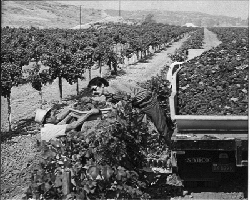

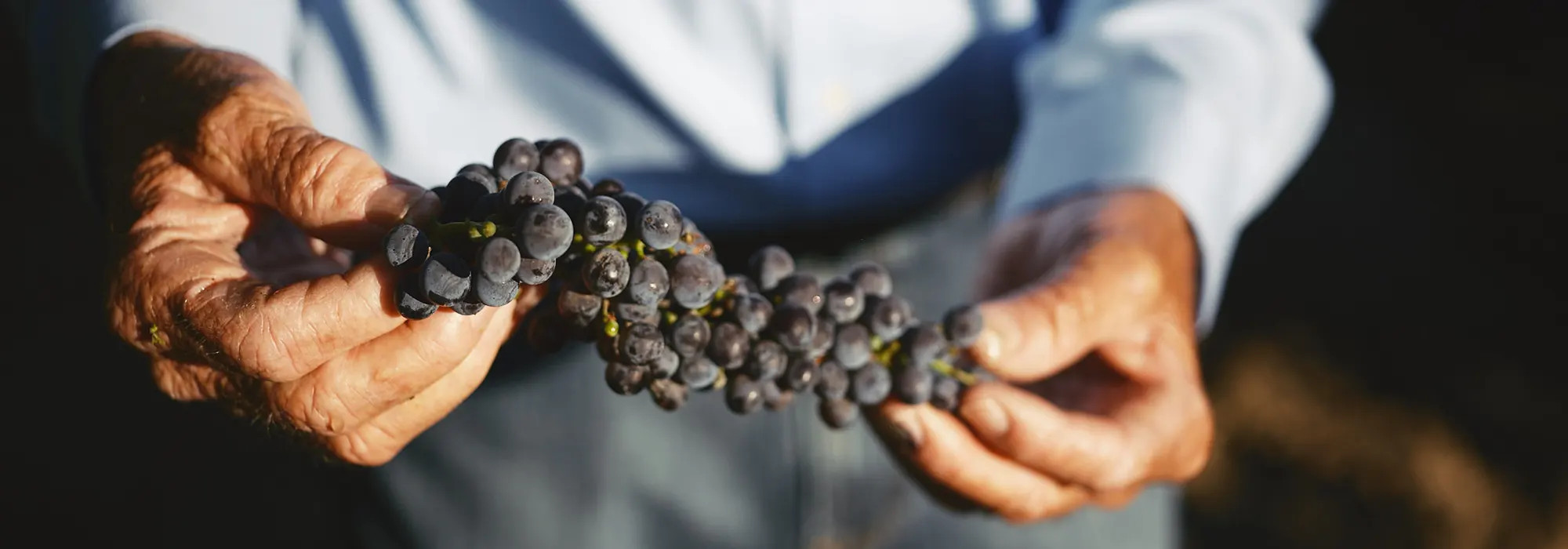


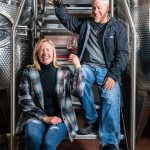
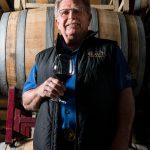
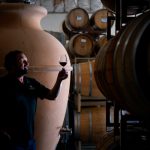
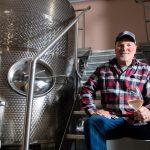

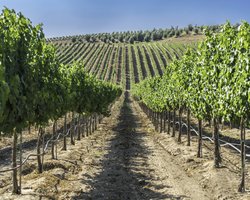


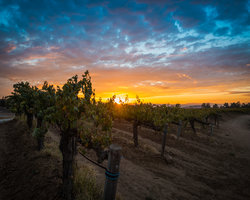
 You sit down to dinner and uncork a beautiful bottle of 2014 Syrah. As you swirl and sip, you start to imagine life as a winemaker. The romance of waking up on a cool September morning, opening your blinds and looking out onto your perfectly manicured vineyards. The satisfaction of tending to your vines, watching them flourish, and ultimately fermenting and bottling the grapes for your family dinner table.
You sit down to dinner and uncork a beautiful bottle of 2014 Syrah. As you swirl and sip, you start to imagine life as a winemaker. The romance of waking up on a cool September morning, opening your blinds and looking out onto your perfectly manicured vineyards. The satisfaction of tending to your vines, watching them flourish, and ultimately fermenting and bottling the grapes for your family dinner table. The Temecula Valley Winegrowers Association (TVWA)
The Temecula Valley Winegrowers Association (TVWA)